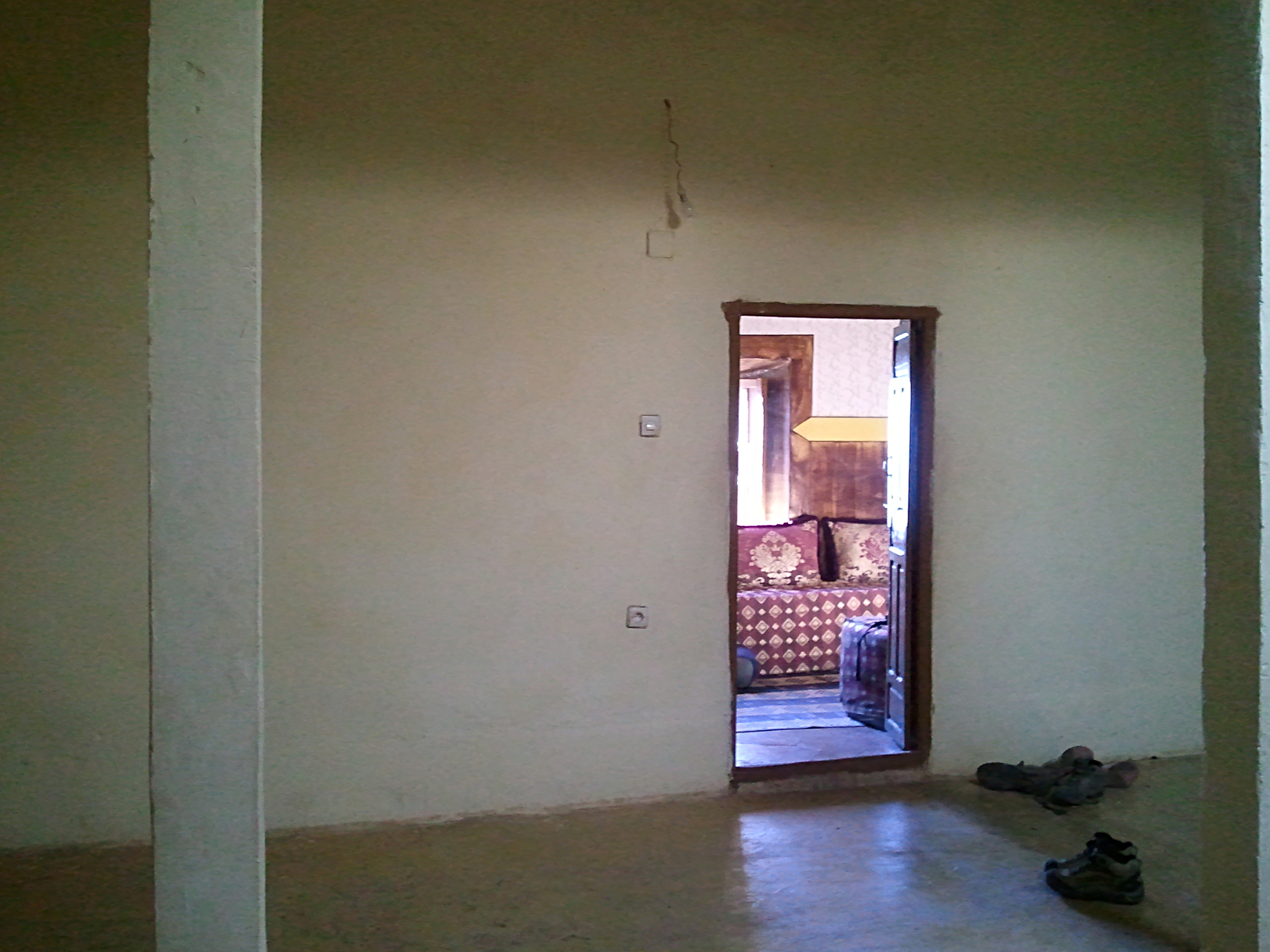

The bus from the airport deposits us in the Djemaa el-Fna, Marrakech’s main square. We are immediately bathed in fragrant smoke, which emanates from huge tents packed with grills, many-gallon vats of tea, piles of raw meat and fish and whole grinning lambs’ heads. Behind the tents, men in pointy-hooded cloaks whisper urgently into their cell phones; in front, crowds gather in circles to hear stories recited over pounding drums and amplified mandolins. The ground is carpeted in garbage and feral cats.
By morning the streets are clean. We set off for the Atlas mountains, where we will spend the next three days hiking. “Hiking” turns out to be rather too strong a word for the walk, which is undertaken with the aid of a guide, a cook, two pack mules and a muleteer. After only two hours on the trail we are served an embarassingly sumptuous lunch, which we are expected to consume reclining on pillows. While preparing it, the guide (accustomed to British tour groups) asks us if we “want flavors” with our food; after two months of boiled potatoes we assent desperately.
Thyme grows wild by the trailside. Massive blades of clear crystalline quartz protrude from the hills like the shattered thighbones of glass giants. After a day of walking through red dust, the fields that surround the village where we spend the night burn with a deep, almost unnatural green.
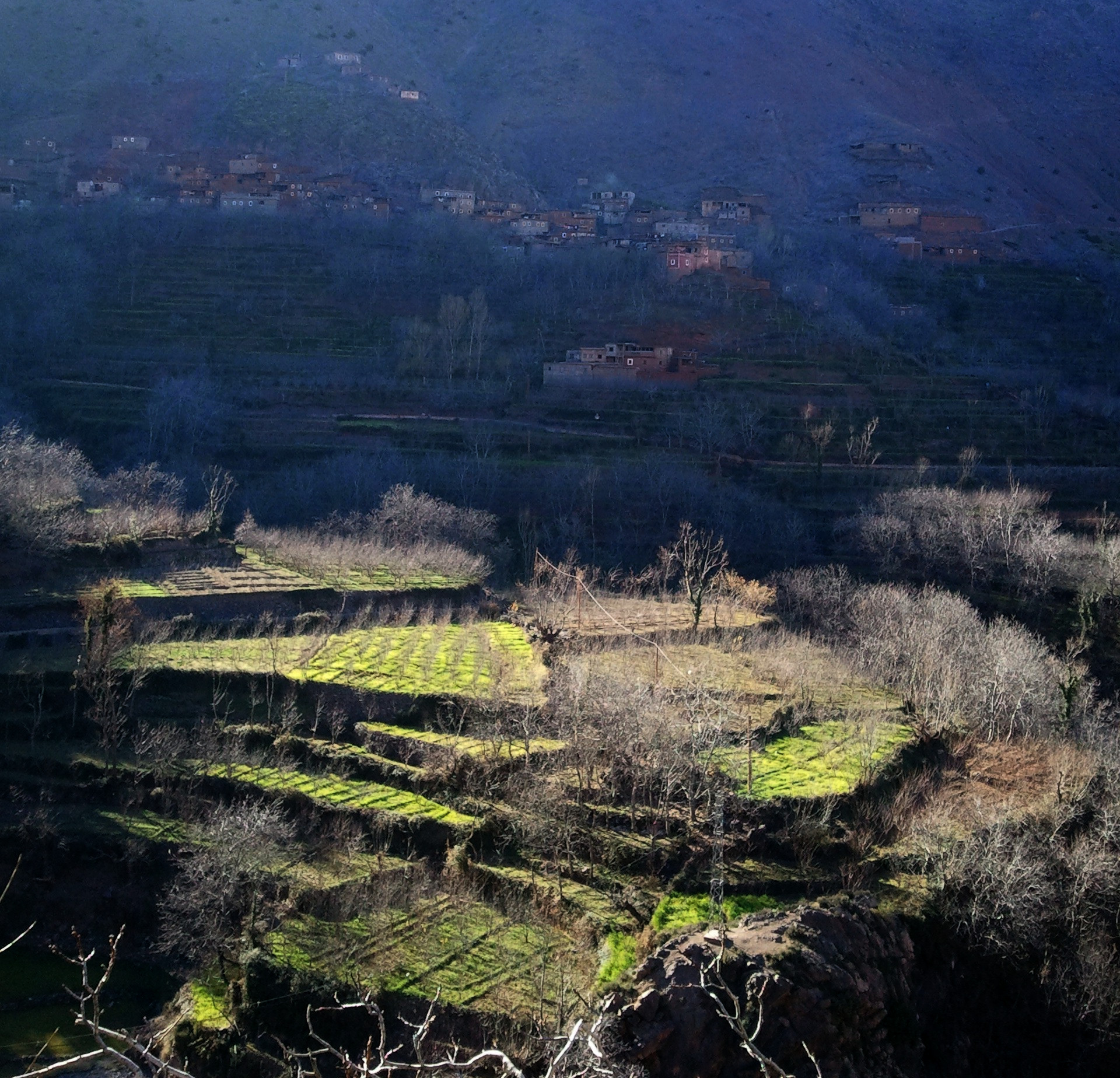
These remote mountain passes are astonishingly noisy at dawn—livestock, children shrieking, tinny radio music and calls to prayer echo across the valleys. You can hear roosters crow from miles away. Each village we pass is a different color, each the same shade as the banded rock it springs from. Narrow, winding streets lead up sheer hillsides; occasional corners present blinding views of the white expanse of the highest Atlas. The Berbers have been selective in their adoption of modernity: electric lights, reinforced concrete, cellular telephony, satellite television, and little else. At lunch we are served bread with clear olive oil pressed from the trees that line the road. At night we smell garbage burning in the valley below.
The next day we trek to a frozen waterfall and then over a pass to our destination, a large town of four thousand called Imlil. The pass is high. Terrace farms that once seemed to stretch like staircases endlessly upward shrink to ornamental borders on the valley floors, and we peer out over tremendous empty spaces, yawning dentate and deep. We arrive (practically falling down the mountainside) into Imlil, then return to smoking pink Marrakech.
Walking through the city’s alleys the next day, we try our hand at bargaining with the infamous shopowners. My companions go after a carved wooden chess set. I’ve fixated on a beautiful uranium-red tagine—I haggle with its seller for a few minutes, but he refuses my final price so I walk away. Fifteen minutes later he comes running after me, begging me to pay what I’d offered.1


The train to Fes is surprisingly comfortable. We pass the six-hour journey eating dates and arguing about the study of history as the darkened countryside whizzes by. The cab driver who takes us from the train station to the hostel is energetic, cursing in Italian at other drivers and practicing (poorly, but with great enthusiasm) his English. The hostel itself is located down an alley, where a deranged-looking man wearing a reflective vest and carrying small branch announces in French that he is “security” and attempts to serve as an escort.
Fes, with high whitewashed walls towering above windswept alleys, moves more deliberately than Marrakech. It is impossibly old. Hastily-extended floors swell cancerously from flaking plaster, and bridges and porches thrust across narrow patches of sky on centuries-old wooden scaffolds which cling like ivy to the crumbling masonry. Fes smells of tanneries and butchers (that is, of lime, chicken shit and blood). After hours of wandering we eat dinner in a cafe; there a crowd of locals, our age and with heads uncovered, dance to drums and steel castanets. We join them.
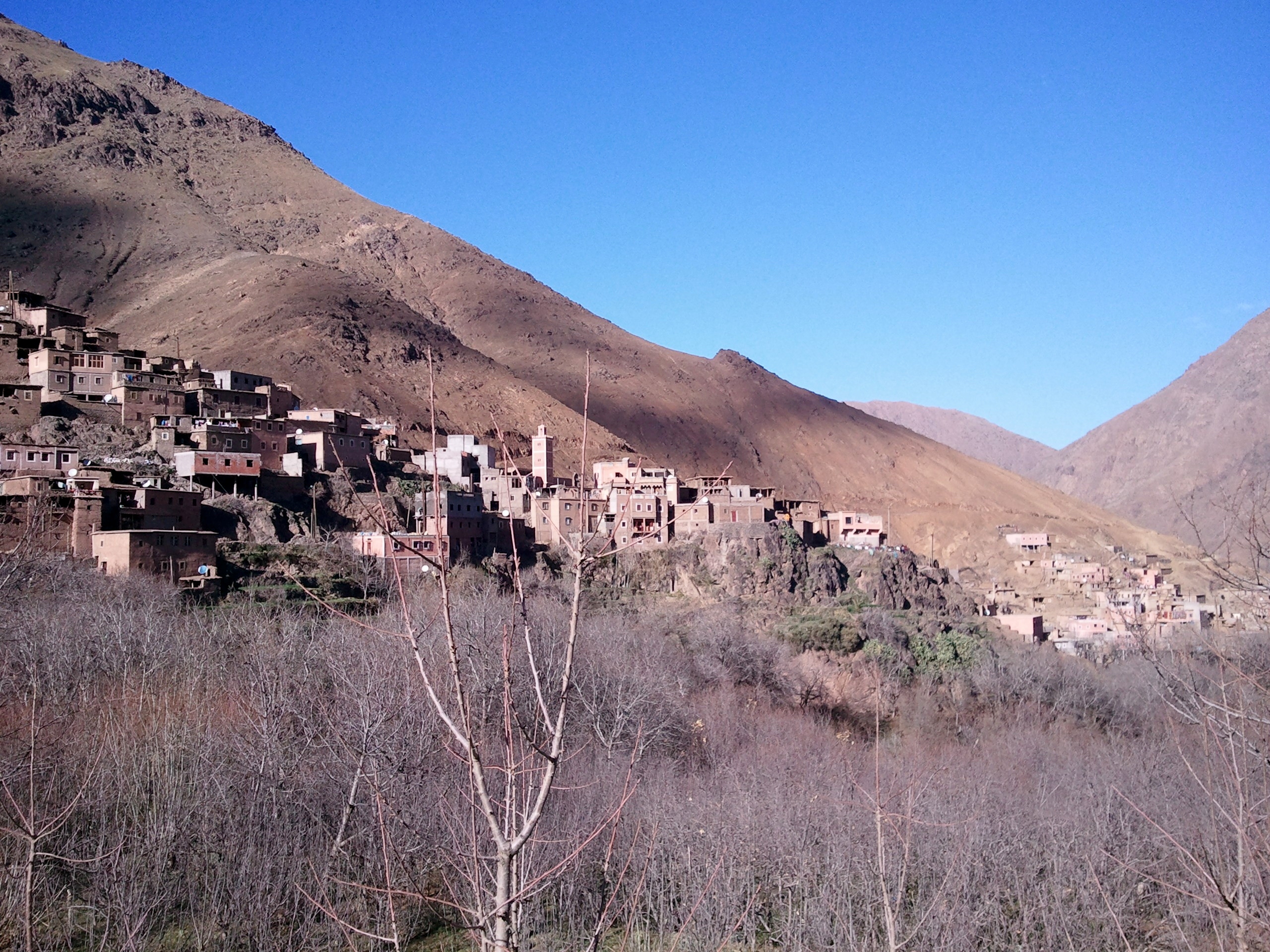
In the morning we hire a car to take us into the mid-Atlas. The driver is named Mohammed, and the day is mostly unremarkable. We pass through a cluster of hotels, parks and residences approximating a Swiss mountain village, a vacation spot for Morocco’s wealthy. Stopping at a cedar forest, we spend a quarter of an hour watching in rapt silence as a pair of Barbary apes groom each other, then stroll through a nature preserve where a hijab-clad family von Trapp is picnicing beneath a waterfall.
Back in Fes we enter the night’s hostel, which we are surprised to discover is a magnificently-preserved seventeenth-century riad with intricate woodwork and tiling, private rooms and antique lamps (we are paying less than thirteen dollars a night). The friendly proprietor, Mohammed, has a Glasgow smile. He starts moaning quietly to himself as he checks us in; it transpires that we have been accidentally offered a third of the normal rate. We are generously allowed to stay. After dinner and a frightening hustle through the dark medina with a demented restaurant promoter in pursuit, we are introduced to Mohammed’s business partners, Aziz and Mohammed, who help us buy bus tickets and recommend a hostel run by a friend named Mohammed in Chefchaouen.
The next day’s bus to Chefchaouen passes through rolling green hills that could be Tilden if not for the succulents. The town itself is dreamlike—quiet, soft blue and sun-bleached. Shopkeepers let you walk by unmolested, teenage boys proffer the pellets of hash secreted in their palms almost apologetically and every promise of a delicious meal is genuine. We spend the afternoon lunching luxuriantly, climb to watch the sun set from the northern wall of the city, then wander through its streets, crossing paths with familiar fellow travelers and a raucous wedding procession.
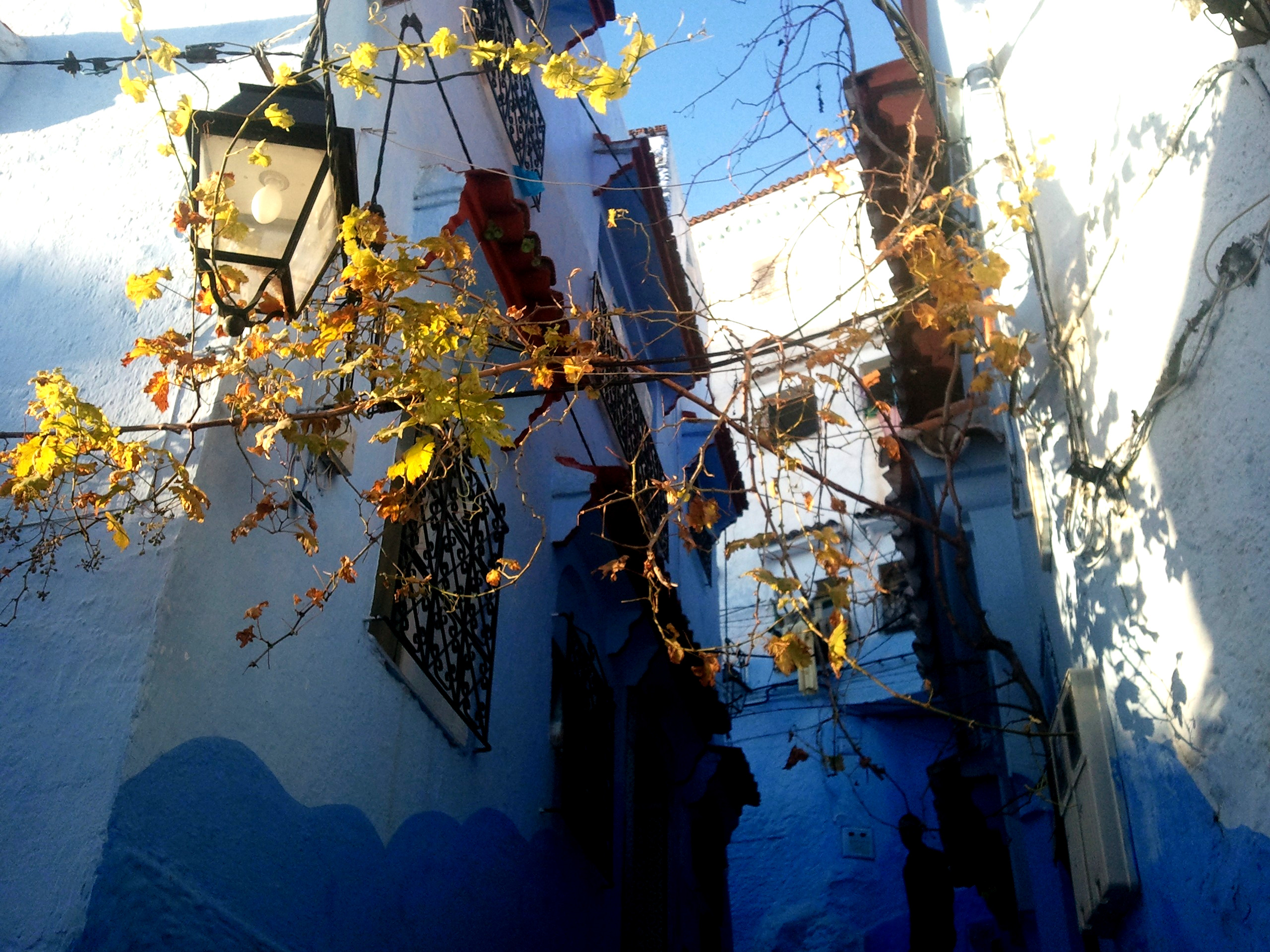
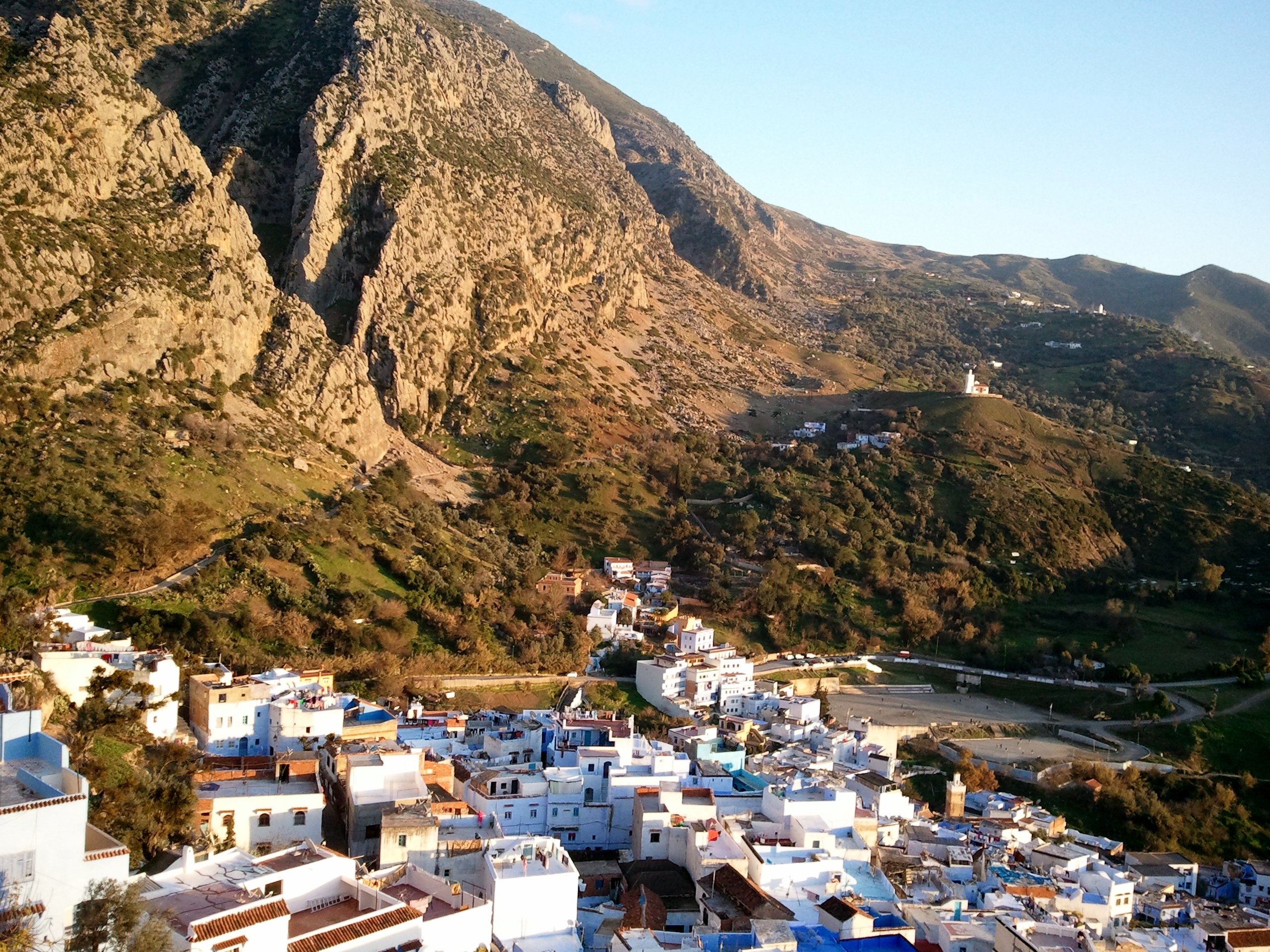
We believe we’ve given ourselves ample time to reach the next day’s ferry to Spain. But the sandwiches we order for a quick lunch take fifteen minutes each to prepare, our driver to Tangier (who seems to be suffering some kind of personal crisis) stops periodically at the roadside to curse into his phone, and the ferry schedule is a lie. After passing through border, a man in a safety vest reading “EXPLOITATION” in large block capitals informs us that the 4:00 ferry is delayed. The delay is an hour, nearly the length of the crossing itself, and once on board we wait another hour before the boat finally leaves. We clear Spanish customs five minutes before the last bus departs from Algeciras to Seville. The bus has a faulty transmission and makes a horrible grinding noise in low gears, but we clatter serenely through the white and lamplit night cities of southern Spain and reach Seville without incident.
The three days in Spain are a blur of red-and-gold corridors, fatty ham, sherry and regret. Our tour guide in Seville is an enthusiastic cynic, devoting little of his time to descriptions of cathedrals and much to the false religiosity of the Spanish; he takes us through Fascist neighborhoods and laments his own unemployment and the lost glory of his city. We tip him twenty-five euros. In Málaga, we arrive early at the airport and pass the time in the duty-free shop, where a middle-aged clerk with braces pours us a steady stream of wine samples, reminisces about the days before Spain’s economic collapse and urges us to stay in school.
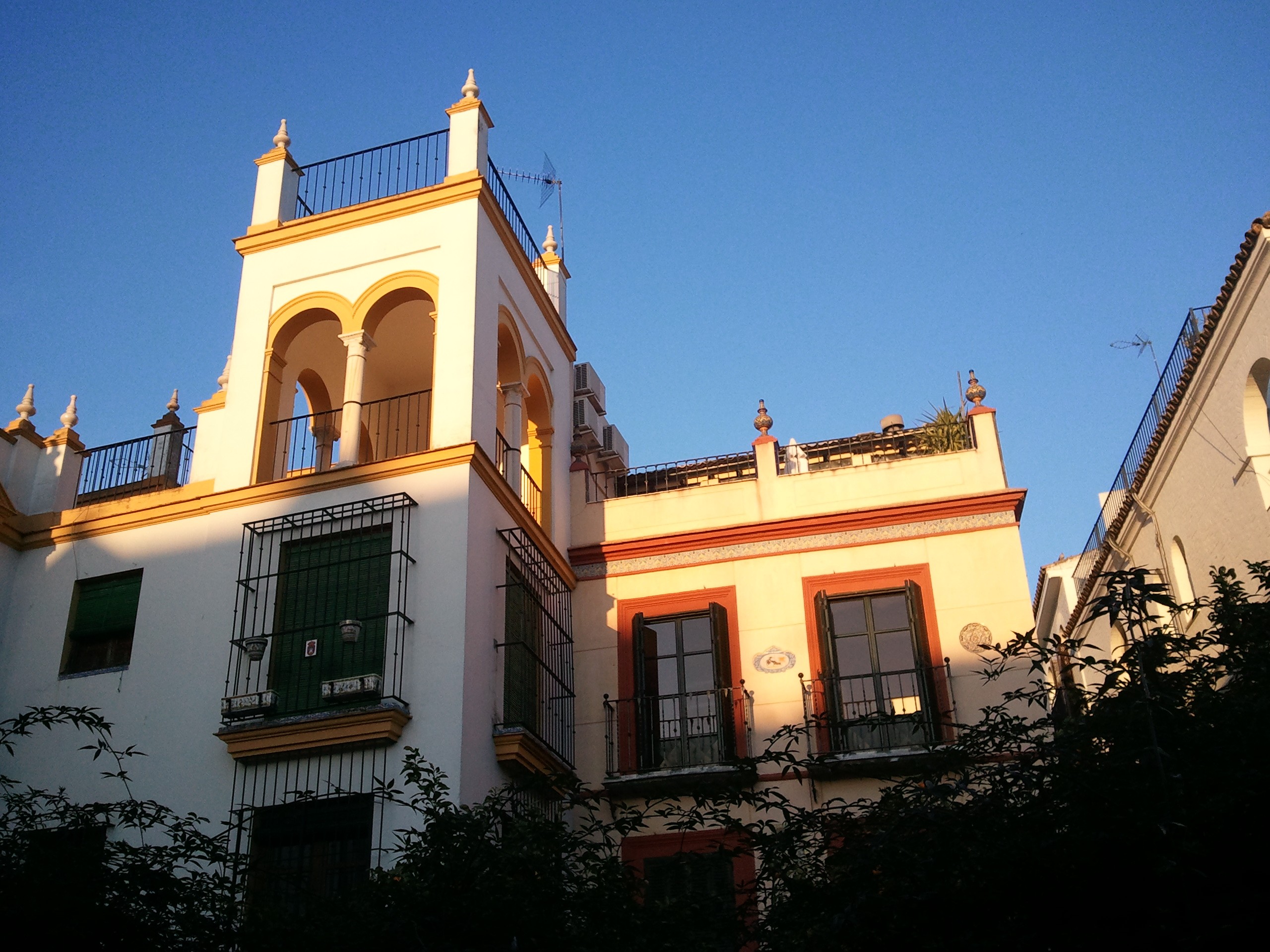
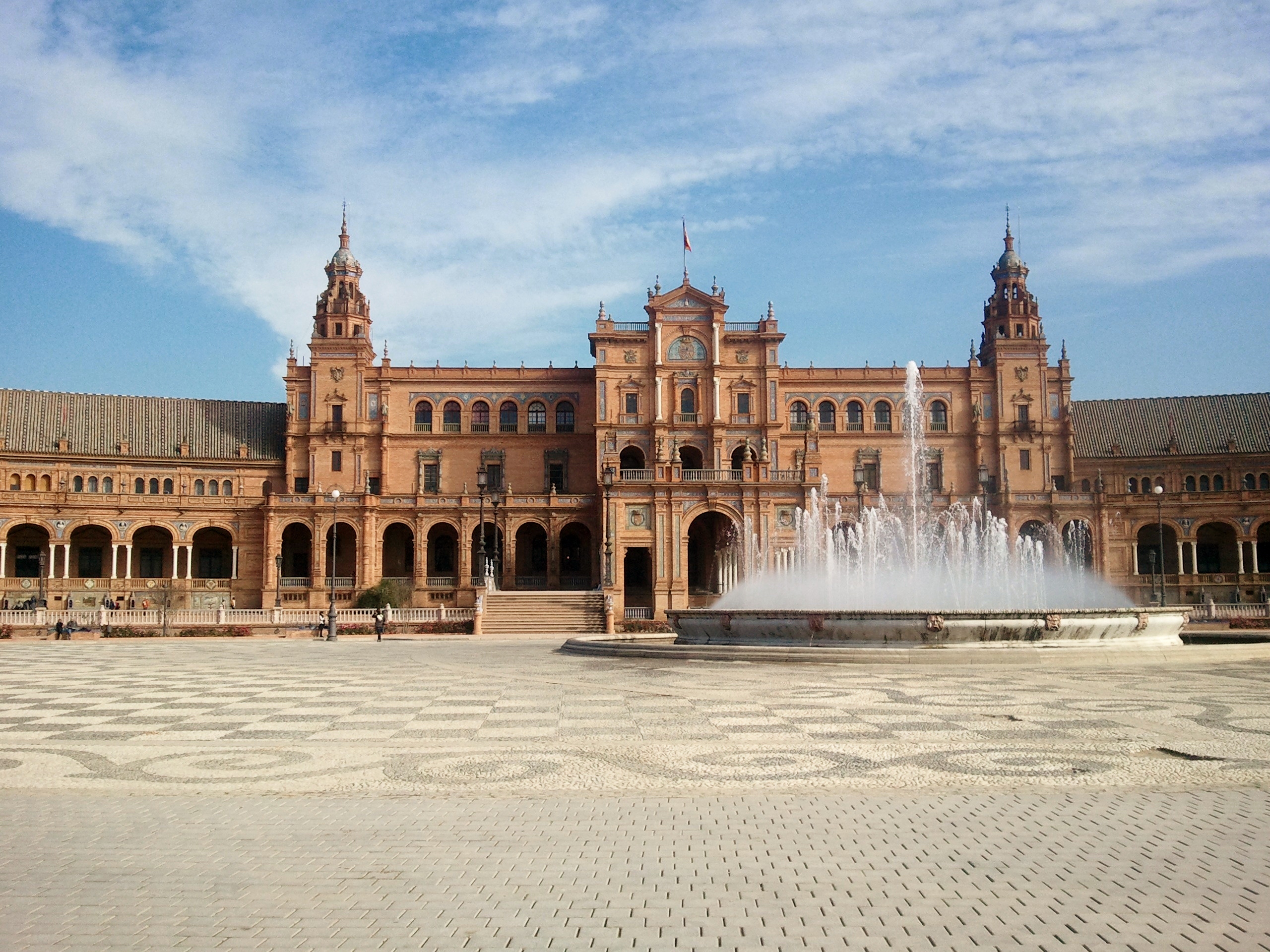
Cambridge, after our weeks on the sunny Mediterranean, is freezing.
Where I eventually buy a similar vessel for an eigth of the price. ↩